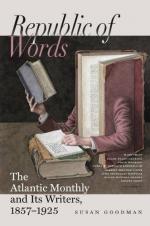These notices are to be found in his “Flores Paradise.” Another work, entitled “Dyuers Soyles for manuring pasture & arable land,” enumerates, in addition to the usual odorous galaxy, such extraordinarily new matters (in that day) as “salt, street-dirt, clay, Fullers earth, moorish earth, fern, hair, calcination of all vegetables, malt dust, soap-boilers ashes, and marle.” But what I think particularly commends him to notice, and makes him worthy to be enrolled among the pioneers, is his little tract upon “The Setting of Corne."[8]
[Footnote 8: This is not mentioned either by Felton in his Portraits, etc., or by Johnson in his History of Gardening. Donaldson gives the title, and the headings of the chapters.]
In this he anticipates the system of “dibbling” grain, which, notwithstanding, is spoken of by writers within half a century[9] as a new thing; and which, it is needless to say, still prevails extensively in many parts of England. If the tract alluded to be indeed the work of Sir Hugh Platt, it antedates very many of the suggestions and improvements which are usually accorded to Tull. The latter, indeed, proposed the drill, and repeated tillage; but certain advantages, before unconsidered, such as increased tillering of individual plants, economy of seed, and facility of culture, are common to both systems. Sir Hugh, in consecutive chapters, shows how the discovery came about; “why the corne shootes into so many eares”; how the ground is to be dug for the new practice; and what are the several instruments for making the holes and covering the grain.
[Footnote 9: See Young, Annals of Agriculture, Vol. III. p. 219, et seq.]
I cannot take a more courteous leave of this worthy gentleman than by giving his own envoi to the most considerable of his books:—“Thus, gentle Reader, having acquainted thee with my long, costly, and laborious collections, not written at Adventure, or by an imaginary conceit in a Scholler’s private studie, but wrung out of the earth, by the painfull hand of experience: and having also given thee a touch of Nature, whom no man as yet ever durst send naked into the worlde without her veyle: and Expecting, by thy good entertainement of these, some encouragement for higher and deeper discoveries hereafter, I leave thee to the God of Nature, from whom all the true light of Nature proceedeth.”
* * * * *
Gervase Markham must have been a roistering gallant about the time that Sir Hugh was conducting his experiments on “Soyles”; for, in 1591, he had the honor to be dangerously wounded in a duel which he fought in behalf of the Countess of Shrewsbury; there are also some painful rumors current (in old books) in regard to his habits in early life, which weaken somewhat our trust in him as a quiet country counsellor. I suspect, that, up to mature life, at any rate, he knew much more about the sparring of a game-cock than the making of capons. Yet he wrote books upon the proper care of beasts and fowls, as well as upon almost every subject connected with husbandry. And that these were good books, or at least in large demand, we have in evidence the memorandum of a promise which some griping bookseller extorted from him, under date of July, 1617:—




